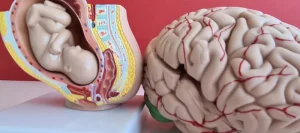More to the Story than Alcohol = Heart Protection Harvard Health Publications

About 30 grams of alcohol — equating to two standard drinks — can lower fibrinogen levels, which can affect blood clotting. We identified patients more than 20-years old with newly diagnosed AI (ICD-9-CM codes 303, 305.0, V113, and A215) from hospitalization records from 2000 to 2011 as the AI cohort. The index date for the patients with AI was the date of their first admission visit.

Can I take Tylenol or NSAIDs with Pradaxa?
These drugs may also be an option for people who have persistent and debilitating PTS. A doctor may prescribe warfarin pills for people who are transitioning from heparin treatment. Playing risky sports, such as hockey, soccer, football, skiing, gymnastics, or ice skating. These activities increase your chance of getting an injury that causes you to bleed. Atrial fibrillation is one of the most common heart rhythm problems.
Artificial Sweetener Erythritol Linked to Blood Clots, Study Warns
- For example, a blood clot can form elsewhere in the body and travel to the heart, lungs, or brain.
- They can discuss your treatment options and the best way to feed your child.
- The American Society of Hematology (ASH) defines a blood clot – also called blood coagulation or a thrombosis – as the gathering of proteins in the blood along with platelets to form a solid or semisolid mass in a blood vessel.
- Comparison of demographics and comorbidity between alcohol intoxication patients and controls.
- Increased autophagy as a possible mechanism underlying the adverse myocardial effects of ethanol is intriguing.
High levels of triglycerides in the blood have therefore been linked to atherosclerosis, heart disease, and stroke. Some people may initially follow these recommendations but become tempted to increase their alcohol intake over time. Researchers have found that low-to-moderate drinking could reduce certain processes that lead to heart disease and inflammation. However, more research is necessary to determine whether alcohol use is directly responsible for these possible heart benefits. Using data from the NHIRD, we assembled 61,229 patients with acute AI and randomly selected 244,916 controls.
Stay on top of latest health news from Harvard Medical School.
The offspring had an increased risk of delayed or irregular bone formation and death. However, animal studies don’t indicate what will happen in humans who take Pradaxa. If you’re taking Pradaxa to prevent a deep vein thrombosis (DVT) or pulmonary embolism (PE) after a hip replacement, the starting dose would be 110 mg on day 1.
- You’re also at a higher risk due to the surgery itself, in which your hip joint is replaced.
- Finally, in studies of people from certain Eastern European countries, investigators have failed to find a cardioprotective effect with any level of ethanol consumption (Britton and McKee 2000).
- Therefore, as in animal studies, the effects of ethanol on endothelial function in humans likely depend on the dose and duration of ethanol consumption.
- Hemolysis can be an underlying cause of anemia, and several types of hemolytic anemia may be caused by chronic heavy alcohol consumption.
- These types of blood clot are very serious and require urgent treatment.
Although substantial circumstantial evidence implicates alcohol as a cause of dilated cardiomyopathy, the absence of specific diagnostic tests seriously impedes epidemiological study. The most convincing circumstantial evidence for alcoholic cardiomyopathy is the extensive data, in animals and humans, of nonspecific cardiac abnormalities related to alcohol. One key report (Urbano-Marquez et al. 1989) showed a clear relationship in alcoholics between lifetime alcohol consumption and both structural and functional abnormalities of heart and skeletal muscle. The amounts of alcohol necessary to produce such evidence were large, equivalent to eight or more drinks per day over a period of 20 years. Thus, moderate drinking does not appear to increase the risk of alcoholic cardiomyopathy.

Are some blood thinners different than others in this regard, or is it all the same risk?
«Coagulation» is a term used to describe the process of blood cells known as platelets sticking together. When a person experiences an injury, those platelets travel to the area to form together into a blood clot to stop the bleeding. In certain situations, such as switching from Pradaxa to warfarin (Coumadin), you may have to start taking warfarin a few days before stopping Pradaxa treatment.
- A blood clot that develops in your lower legs is typically known as a DVT.
- Most likely, the decrease in contractility was offset by corresponding decreases in afterload (end-systolic wall stress), systemic vascular resistance, and aortic peak pressure, which maintained cardiac output.
- For example, iron absorption from the food in the gastrointestinal tract may be elevated in alcoholics.
- For example, foods that are high in vitamin K can work against warfarin, but not other blood thinners.
- Among persons older than age 60, overt or latent CAD may play a role in risk of death from causes other than CAD (Klatsky et al. 1992).
Others claim benefits that moderate intake of alcohol can act somewhat like a blood thinner in the body. It can be suggested to them, that alcohol does affect blood clotting processes, but not in the way some might think. Warfarin is one of the most popular drugs used to prevent and treat deep vein blood thinners and alcohol thrombosis (DVT). However, like any medication, how well it works for you is also affected by your lifestyle. If drinking alcohol is a part of your lifestyle, you may wonder how alcohol can affects your DVT and medication. This article will help shed light on how alcohol interacts with warfarin.
Treatment and home management for blood clots
Several excellent reviews offer more detailed assessments of vascular cellular mechanisms (Cahill and Redmond 2012; Husain et al. 2014; Marchi et al. 2014; Toda and Ayajiki 2010). Additionally, the authors discussed older studies that suggested binge drinking can cause temporary increases in blood pressure. They also highlighted that long-term heavy drinking and binge drinking may increase someone’s risk of various cardiovascular conditions. A 2017 review explains that alcohol consumption has complex and varying effects on platelets, which are small blood cells that initiate the coagulation cascade, causing blood to clot. The amount of alcohol a person consumes daily contributes to how it affects blood and heart health. New research has found that moderate consumption, meaning one or two drinks per day, can decrease cardiovascular disease risk.
Tips for reducing your alcohol consumption

Finally, alcohol adversely affects the platelets and other components of the blood-clotting system. Heavy alcohol consumption thus may increase the drinker’s risk of suffering a stroke. (For more information on the blood’s composition and on the various types of blood cells and their production, see sidebar, pp. 50–51.) Alcohol’s adverse effects on the blood-building, or hematopoietic, system are both direct and indirect. The direct consequences of excessive alcohol consumption include toxic effects on the bone marrow; the blood cell precursors; and the mature red blood cells (RBC’s), white blood cells (WBC’s), and platelets.

Alcohol can also affect the action of platelets, which are the components of the blood that form clots. A 2016 review suggests that significant daily alcohol consumption increases the activity of platelets. Moderate alcohol use is generally safe while taking most blood thinners. For healthy adults, doctors recommend limiting alcohol intake to a maximum of two drinks a day for males and one drink a day for females. There are no specific warnings about consuming alcohol while taking other blood thinners.


